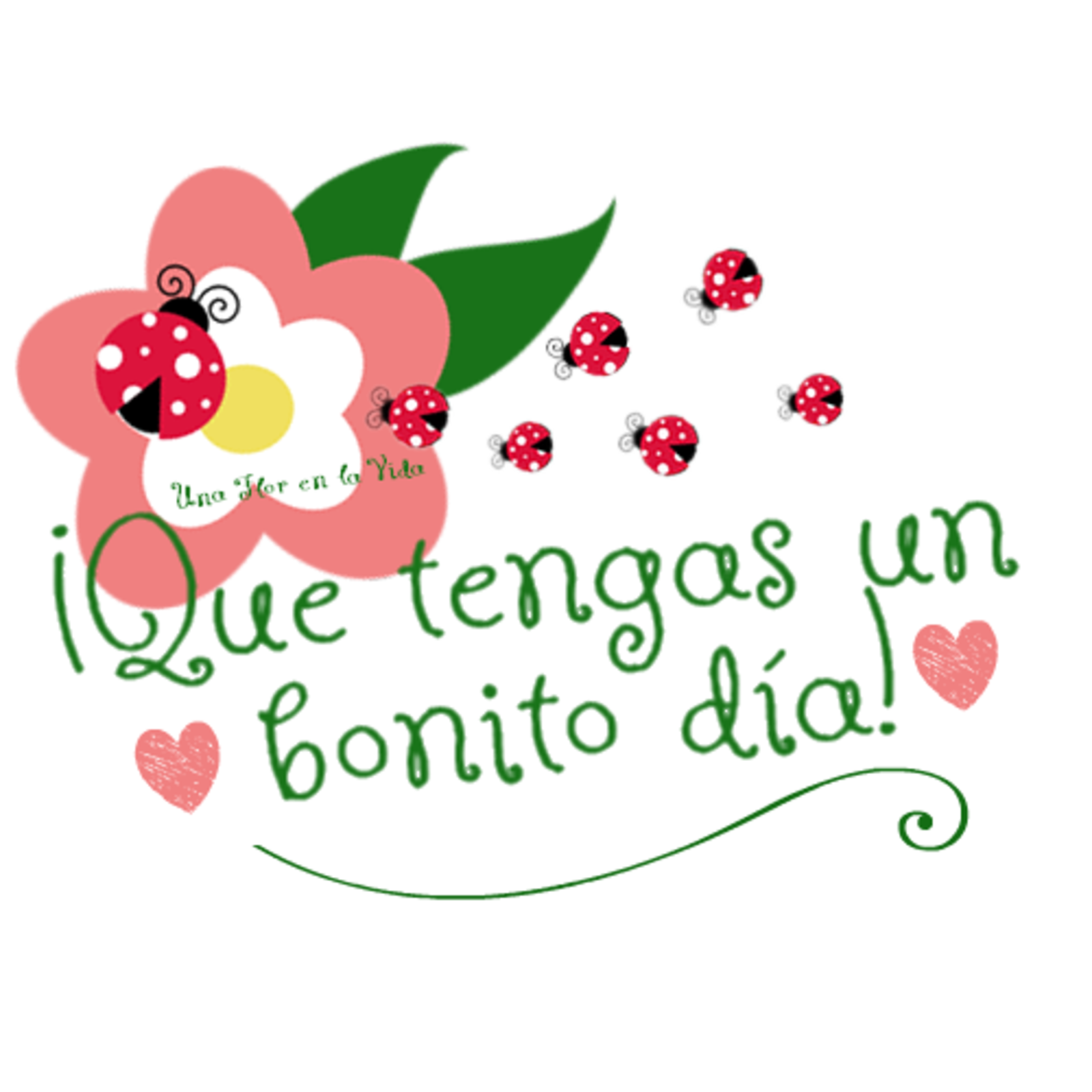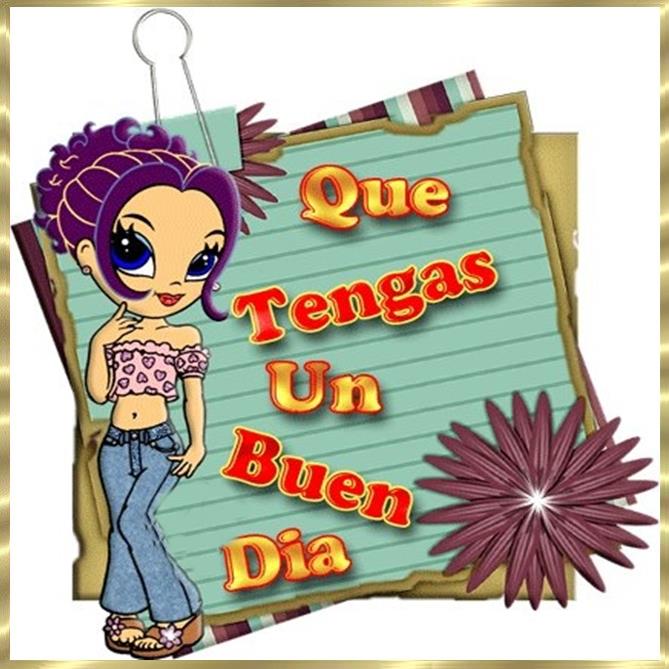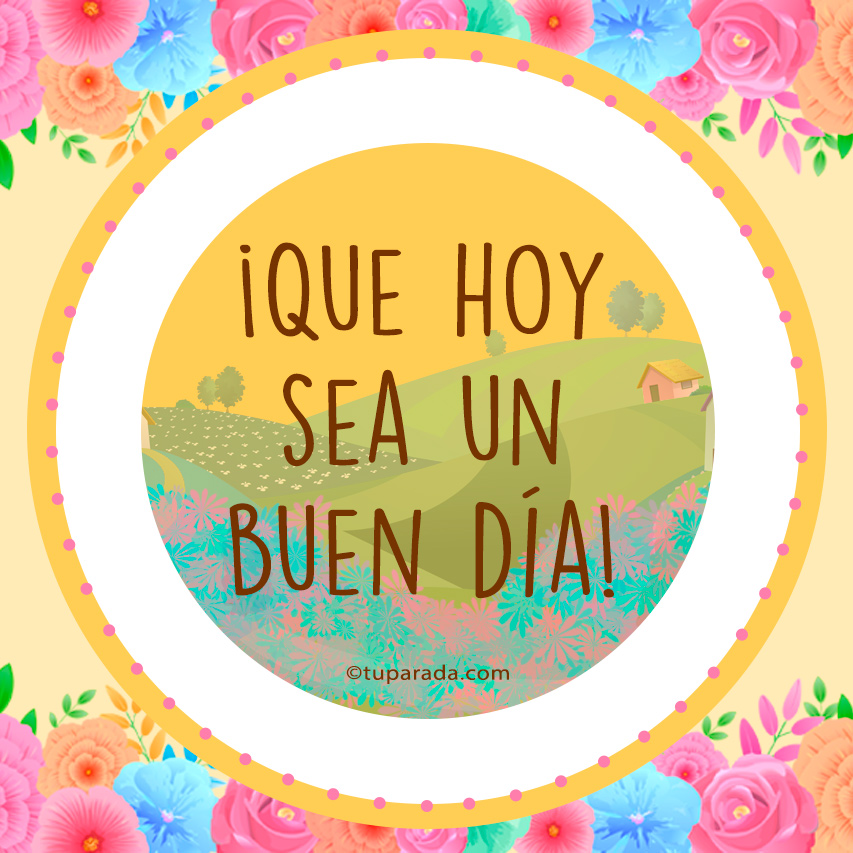
Imágenes de que tengas un buen día Imágenes
Maria: ¡Qué bien! ¡Te deseo que tengas un día productivo! Carlos: ¡Gracias, María! Igualmente. ¡Que tengas un día increíble! In this conversation, Carlos and Maria use a mix of formal and informal language based on their friendship level. Feel free to adapt these phrases to match your own conversations and personal style.

349+ Imágenes de Buenos Días nuevas Página 7 de 35
"Que tenga un buen día" (kay TEN-gah oon bwen DI-ah): If you're speaking to someone older than you or to an authority figure, try using the formal variation of "que tengas un buen día" instead. You may also see this form referred to as the "usted" form. Don't worry too much if you mess this up—Spanish speakers tend to use the formal register of the language far less than.

Pin on Día a Día
Both 'buenos días' and 'buen día' can also be used as a way of saying goodbye to someone. This use is common to all Spanish speaking countries and you'll often hear 'Qué tengas (un) buen día' when leaving shops, etc. Vendedor - ¡Muchas gracias! Que tengas muy buen día. Cliente - ¡Igualmente! (we´ll get onto this one later)

Imágenes de que tengas un buen dia Imágenes
Que. Que is used at the beginning, because this phrase is actually a shortened version of "I hope you have a good day," or Espero que tengas un buen día. tenga / tengas. Tenga is the subjunctive form of the verb tener being used as an imperative. Learn more about these types of commands here. un buen día

349+ Imágenes de Buenos Días nuevas Página 28 de 35
¡Que tengas un buen dia! Hayley y Maider. Happy Hour Spanish. Hayley & Maider are co-founders of Happy Hour Spanish, an online Spanish Program utilizing original video content and local meetups for a true Spanish immersion experience. Together they speak English, Spanish, French, and Italian and have a passion for teaching and.

Que tengas un buen día TnRelaciones
Que tengas un buen día. First let's talk about the most common way of saying have a good day in Spanish - Que tengas un buen día - which literally translates to "have a good day". This sentence is quite widespread throughout the Spanish-speaking world, so you will have no problem if you want to use it in Latin America or Spain.

Bonitas imágenes para Buenos Días Página 7 de 13
1. Buen día. It is the shortened version of wishing someone a to have a good day in spanish, and translates directly as "good day". 2. ¡Que tengas un bonito día! It is a form of "¡que tengas buen día!". So, it is also another popular way of saying "que tengas un buen día" (have a nice day) in Spanish.

Que hoy sea un buen día, tarjetas de Imágenes con frases
1. Que tengas un buen día. This is the most common way to say "have a good day" in Spanish. It is a friendly and polite expression that can be used in any situation. The verb "tener" means "to have", and "que" is a particle that introduces a wish or desire. Therefore, "que tengas un buen día" literally means "may you.

Imágenes de que tengas un buen dia Imágenes
Que tengas un buen día is a shortened version of an implied fuller expression: [espero] que tengas un buen día — [I hope] that you have a good day. With verbs like esperar, which carry uncertainty, we use a verb form called the subjunctive. Verbs like desear or querer could theoretically also precede " Que tengas un buen día":

Que tengas un gran día ! Buenos días saludos, Saludos de buenos dias
¡Que tenga un buen día! ¡Que le vaya bien! Singular vs. Plural. If you're speaking to more than one person, you should use the following ustedes forms: ¡Que tengan un buen día! ¡Que les vaya bien! All About You. You is translated into Spanish in many different ways. Use the handy table below to help you decide which form you need to use.

Buen Día, que tengas un día excepcional imagen 9219 Imágenes Cool
Que tengas un buen día, Que tenga un buen día. This is the most common way to say have a good day in Spanish.The verb tener means to have in Spanish, so this expression translates literally as may you have a good day.Another common variant is que tengas buen día, dropping the indefinite article un.. This expression can be used in a wide range of contexts, such as wishing a good day to a.

Que Tengas Un Buen Día
1. Que tengas un buen día, Que tenga un buen día. This is the most common way to say good morning in Spanish. Because the verb tener means "to have" in Spanish, this expression literally translates as "May you have a good day.". Another common variation is que tengas una buena dia, which omits the indefinite article un.

Que Tengas un Buen Dia
Deberás de esforzarte al máximo. ¡Que tengas un grandioso día! -Todos los días son buenos días para estar vivos, brille el sol o no. -Marty Robbins. -Culpar un día no te traerá felicidad. Sé positivo y aprende las lecciones de los días malos, porque también esos son importantes en la vida. ¡Que tengas un grandioso día!

Que tengas un excelente dia desmotivaciones Imagui
¡Que tengas un buen día también! Yes, Marta. Don't forget to study for the test! Have a good day too! Antoni is leaving his friend Jhon's house: Antoni: ¿Son las doce ya? Me tengo que ir. ¡Que tengas un buen día! Bueno, lo que queda. Is it noon already? I have to go. Have a good day! Well, what's left of it.

Fondo de pantalla Que tengas un buen día
Torp, que tengas un buen día, y veámonos después de las elecciones. Torp, have a nice day, and let's meet after the elections. Su corazón dejó de latir, que tengas un buen día. His heart stopped, now have a nice day. Cuídate y que tengas un buen día. Take care and have a nice day. Ok, bueno, que tengas un buen día.

Que tengas buen dia Saludos de buenos dias, Buenos días saludos
letiziabarcelona.com. letiziabarcelona.com. Que tengan un buen día. ge.ge.ee. ge.ge.ee. Have a wonderful day. ge.ge.ee. ge.ge.ee. Mostrando una actitud muy en sintonía con la afición del equipo, el delantero de 20 años Martin Mikulic, autor de uno de los goles contra el Celtic, se negó a inclinarse ante el mayor caché de las.